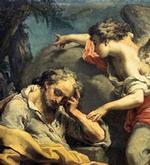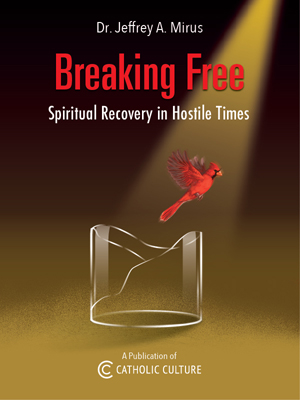Catholic Recipe: Halloween Barmbrack
INGREDIENTS
- 4 cups white flour
- 1/2 level teaspoon ground cinnamon
- 1/2 teaspoon mixed spice
- 1/4 level teaspoon nutmeg
- pinch of salt
- 1/2 stick butter
- 3/4 oz yeast (or 2 teaspoons dried yeast)
- scant 1/2 cup caster (fine) sugar
- 1 1/4 cups tepid milk
- 1 egg, beaten
- 1 cup sultanas
- 1/2 cup currants
- 1/4 cup mixed chopped candied peel
Charms
- 1 pea
- 1 ring
- 1 silver coin
- 1 short piece of matchstick, each wrapped in greaseproof paper
Glaze
- 1-1 1/2 tablespoons sugar
- 2-3 tablespoons boiling water
Details
Yield: 2 loaves barmbrack
Prep Time: 3 hours
Difficulty: ★★★☆
Cost: ★★☆☆
For Ages: 15+
Origin: Ireland
showFood Categories (1)
showOften Made With (1)
showSimilar Recipes (3)
showFeasts (1)
Also Called: Hallowe'en Barmbrack; Barinbreac; bairín breac;
As children we always had a Hallowe'en party, as many Irish children do today. We had the greatest fun planning it for weeks before. We tormented a local farmer until he gave us a few turnips which we hollowed out with sharp spoons to make masks with eerie toothless grins. These were lit with stumps of candles and put up on the gate post outside the house where the party was held. On the previous day all the children participated in the making of the barmbrack, a rich fruit bread with a long history.
The word barm comes from an old English word, beorma, meaning yeasty fermented liquor. Brack comes from the Irish word brac, meaning speckled - which it is, with dried fruit and candied peel. Hallowe'en has always been associated with fortune telling and divination, so various objects are wrapped up and hidden in the cake mixture — a wedding ring, a coin, a pea or a thimble (signifying spinsterhood). After dark children dress up, often as witches or ghosts in hats and masks and black shawls, light turnip lanterns in the windows and go from house to house collecting fruits and nuts.
After hours of merriment and Hallowe'en games the feast began. We ate huge plates of colcannon, a delectable Irish potato dish made with fluffy mashed potatoes, scallions and cabbage with a pool of melted butter in the centre (see recipe). After that there were slices of warm apple cake fresh from the oven with cream and soft brown sugar, and finally it was time to cut the barmbrack. Everyone longed for the ring which meant certain marriage before the year ended even if you were only five! Then the older people started to 'draw down the past' and tell ghost stories in hushed tones, into the early hours. Eventually we made our ways home clutching on to a grown-up and terrified on the least squeak - but not before we had put out a plateful of colcannon with a knob of butter in the centre for the fairies and the ghosts.
DIRECTIONS
1. Sieve the flour, spices and salt into a bowl, then rub in the butter.
2. Cream the yeast with 1 teaspoon of the sugar and 1 teaspoon of the tepid milk; it should soon froth slightly.
3. Pour the remaining tepid milk and the egg into the yeast mixture and combine with the dry ingredients and the sugar. Beat well with a wooden spoon or knead with your hand in the bowl until the batter is stiff but elastic.
4. Fold in the dried fruit and chopped peel, cover the bowl with a damp cloth or pure clingfilm and leave in a warm place until the dough has doubled in size. Knead again for another 2-3 minutes and divide between two greased 1 lb loaf tins.
5. Add the charms at this stage, making sure they are well distributed. Cover again and leave to rise in a warm place for about 30 minutes to 1 hour or until the dough comes up to the top of the tin. Bake in a preheated 350° oven for about 1 hour. Test with a skewer before taking out of the oven.
6. Glaze the top with the sugar dissolved in the boiling water. Turn out to cool on a wire tray and when cold cut in thick slices and butter generously. Barmbrack keeps well, but even when it's stale it is very good toasted and buttered.
Recipe Source: Festive Food of Ireland, The by Darina Allen, Kyle Cathie Limited, 1992Sun21 December
Gospel Excerpt: Such was his intention when, behold, the angel of the Lord appeared to him in a dream and said, "Joseph, son of David, do not be afraid to take Mary your wife into your home. For it is through the Holy Spirit that this child has been conceived in her. She will bear a son and you are to…
Subscribe to Insights...free!News, analysis & spirituality by email twice-weekly from CatholicCulture.org.Free eBook:

Free eBook: Breaking Free Copyright © 2025 Trinity Communications. All rights reserved.




